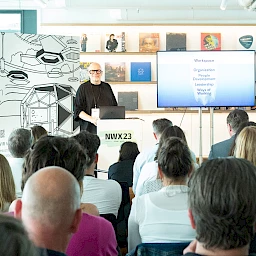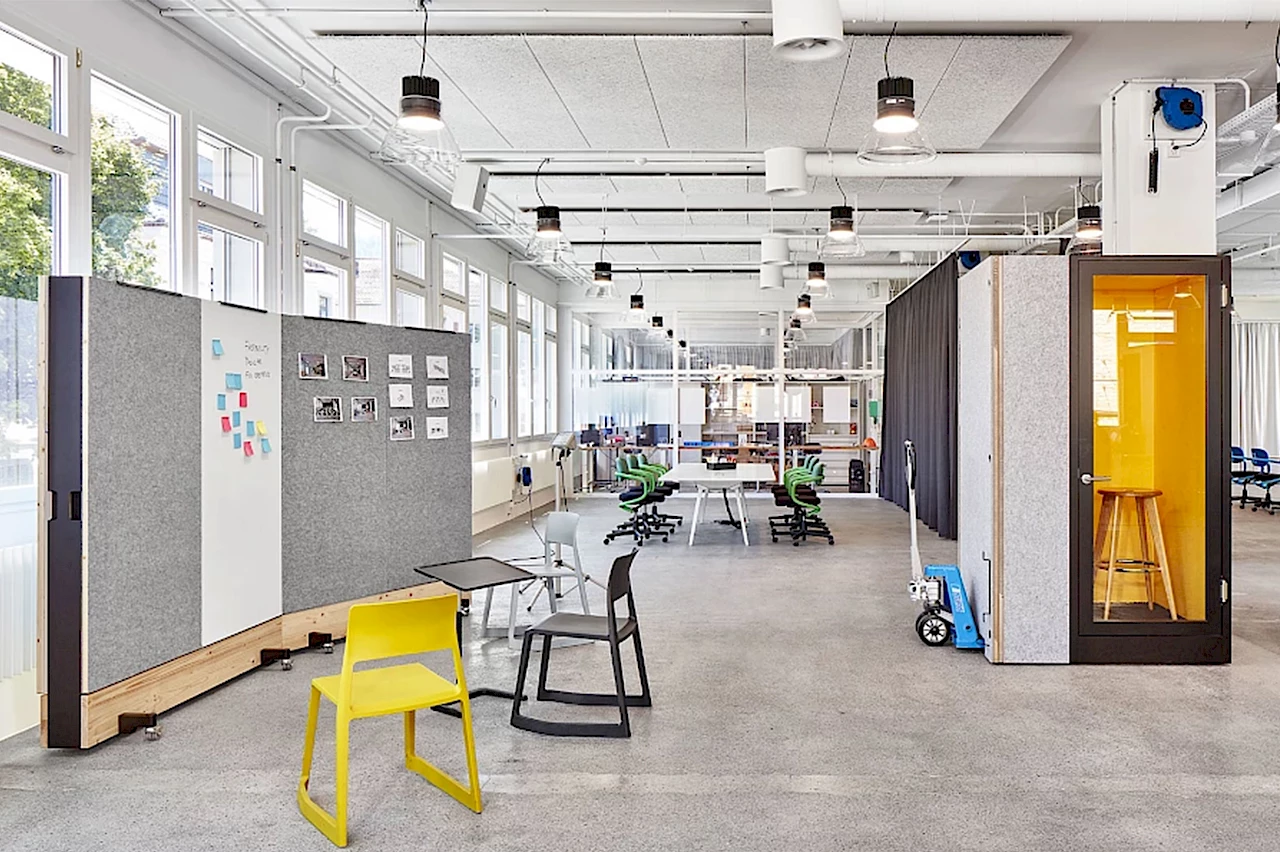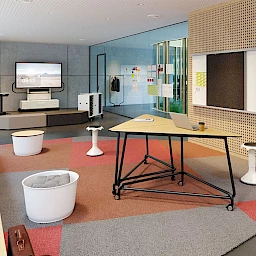The concept of empowerment has recently come up more and more often in the context of the world of work. But what exactly is it, and what does it mean for office design in practical terms?
The term “empowerment” indicates the process of gaining power and also the way to help individuals increase their awareness and make better use of individual design opportunities and resources. Within companies, empowerment is often a task for managers. Strategies such as flat hierarchies and co-determination, opening up design opportunities, promoting an appreciative team culture, transferring responsibility, increasing self-determination and enabling continual learning are the basis of efforts to increase employees’ subjective job satisfaction and so make optimal use of their existing potentials and abilities. Empowerment requires a culture of trust in the organisation and a modern approach to management. It also needs spaces that enable users to do their jobs with a large measure of autonomy and self-determination.
We can examine this concept in depth by looking at concrete examples of empowerment in practice and letting various experts from the IBA Forum talk about empowerment in the office.
Empowerment through room design
In his master class “The Office as a Space for Learning and Innovation” at this year’s New Work Experience event, the architect Peter Ippolito explained how to promote empowerment through room design. He describes the office of the future as a place that gives people the freedom to decide whether to be creative, withdraw into a retreat space or work together with others. It responds to the users’ needs and reflects the company’s identity and values flexibly in physical space. In several theses, Ippolito describes how spaces can enable user journeys, how the office can become a landscape of opportunities for a variety of work formats, and how the space becomes a place where people feel they belong. In order to optimally support individual work intentions, places of work must inspire their users and adapt flexibly to their individual needs.
IBA Forum Media Center

Best practice: Self-determined work thanks to modern office concepts
The day begins at the workstation that was reserved in advance via an app. In the morning a workshop is held in the creative room. The colleagues meet for lunch in the cafeteria, which offers regional cuisine and pleasant surroundings for relaxing and communication. In the afternoon there are videoconferences, a Design Thinking session and a project review in the team room, which is equipped with flexible furniture, whiteboards and colourful armchairs. In between these activities, employees deal with their e‑mails and exchange a few words with their colleagues at the coffee machine in the lounge. This is more or less how a workday could look at the new CONET headquarters in Bonn. It’s a current example of New Work concepts in which people, teams, corporate culture, architecture and digitalisation all interact. The rooms offer wonderful views of the city and its natural surroundings, and the office with its modern open-space concept first and foremost offers the employees flexibility, a modern infrastructure and workstation concepts that make it easy to do self-determined work. It’s obvious that the emphasis is on people as well as their needs and wishes regarding their work environment and the way they do their jobs. The components of this overall concept are workstations with state-of-the-art equipment and enough space for creativity and cooperation as well as interspersed retreat rooms. All of these areas feature top-quality acoustics and smart technology.
Flexible concepts for new learning spaces
The corporate learning expert Dr Felix Dibelka is convinced that companies must focus more strongly on the design of modern learning spaces. The office as a physical space for learning, where employees can acquire the skills they need independently and at their own speed, requires open structures and flexible solutions, spatial and otherwise. An essential component of New Work is lifelong learning. New work structures are constantly putting new topics on the agenda that require not only digital competence but also, and above all, social competence. Although digital tools will bring knowledge much closer to hand, physical workplaces for discussions, knowledge sharing and innovation will remain important.
Offices as places for meeting people and learning
The office as a real meeting place, which enables New Learning as well as New Work, will become increasingly important as a factor that makes companies attractive. Philipp Müller, the Managing Director of the furniture company VS Vereinigte Spezialmöbelfabriken, believes it’s all-important to create an environment that fulfils the whole spectrum of people’s needs and supports their process of lifelong learning. That’s why he too recommends user-centred office designs with spaces and furniture for a variety of work intentions: for informal conversations, concentrated work, project and creative work, and teamwork. The equipment should be high-quality and include the necessary technology. Design and aesthetics must be used in a deliberate way, because spatial surroundings always have an effect on people. In order to develop their potential, individuals must feel that they are welcome and appreciated and that their needs are understood. Good room design can create these conditions successfully.
Hybrid work is associated with a high level of self-organisation, and it requires a great deal of empowerment. We can certainly assume that when offices are properly designed they can offer people the environment they need in order to do their jobs in a self-determined way. In times of New Work and hybrid work, these jobs increasingly involve not only concentrated work but also creative, learning and team processes. You can find more information and recommendations for practical application in the showrooms of our IBA Forum members.
5 tips for promoting empowerment through spatial design
- Employee participation in spatial design: Co-creative design processes can help employees form stronger bonds with a space and initiate a stronger feeling of individual responsibility and self-determination.
- A balance between communication and withdrawal: In addition to spaces that promote interaction and communication between people, an office needs a sufficient number of silent rooms where people can retreat and think.
- Flexibility and adaptability: Spaces should be designed in ways that make it easy to adapt them to different needs. This means that the furniture can be easily rearranged and that workstations can be used for various purposes.
- Furnishings for modern learning spaces: Provision of rooms that are technically well-equipped, enable self-determined learning and can be used by employees in a variety of contexts.
- Well-being and inspiration: Well-thought-out lighting and acoustics concepts, freedom for thinking, and inspiring design elements such as colours, art and nature inspire and promote creativity.




 Jasmin Najiyya
Jasmin Najiyya 

